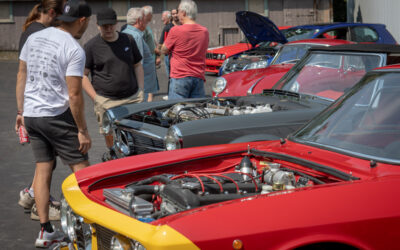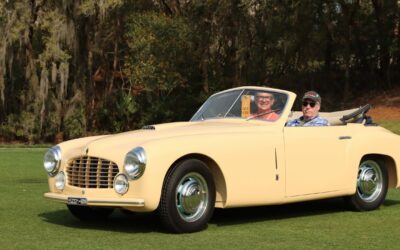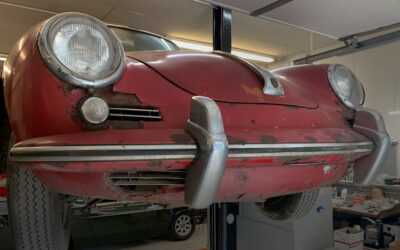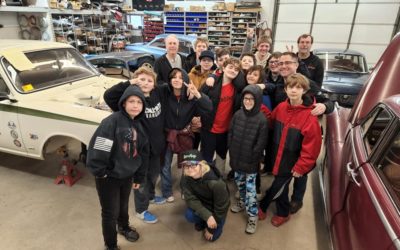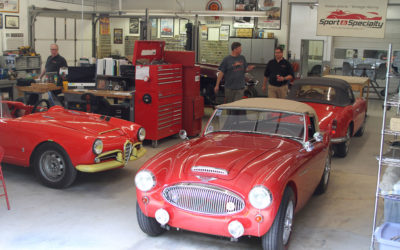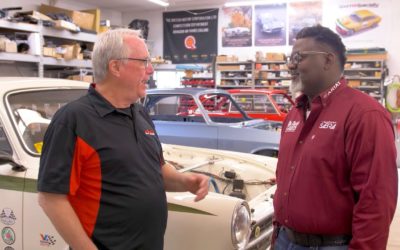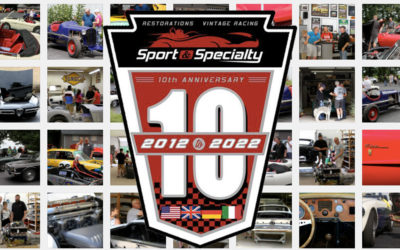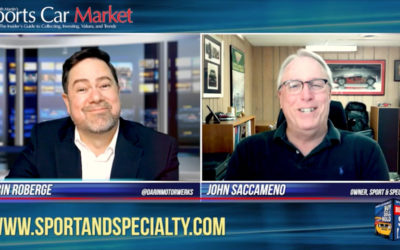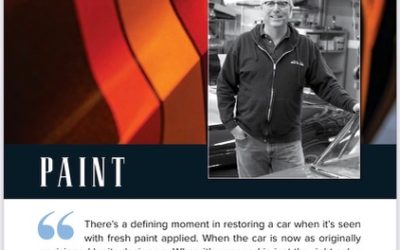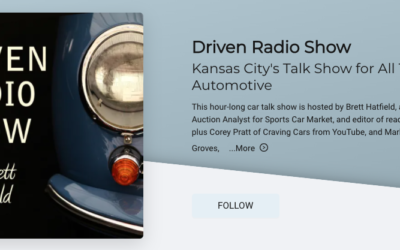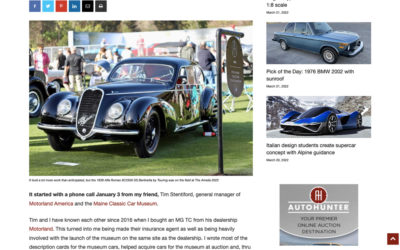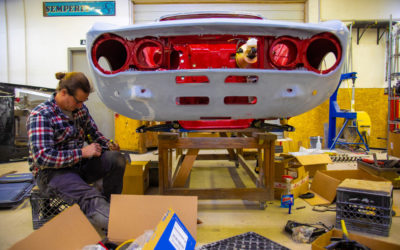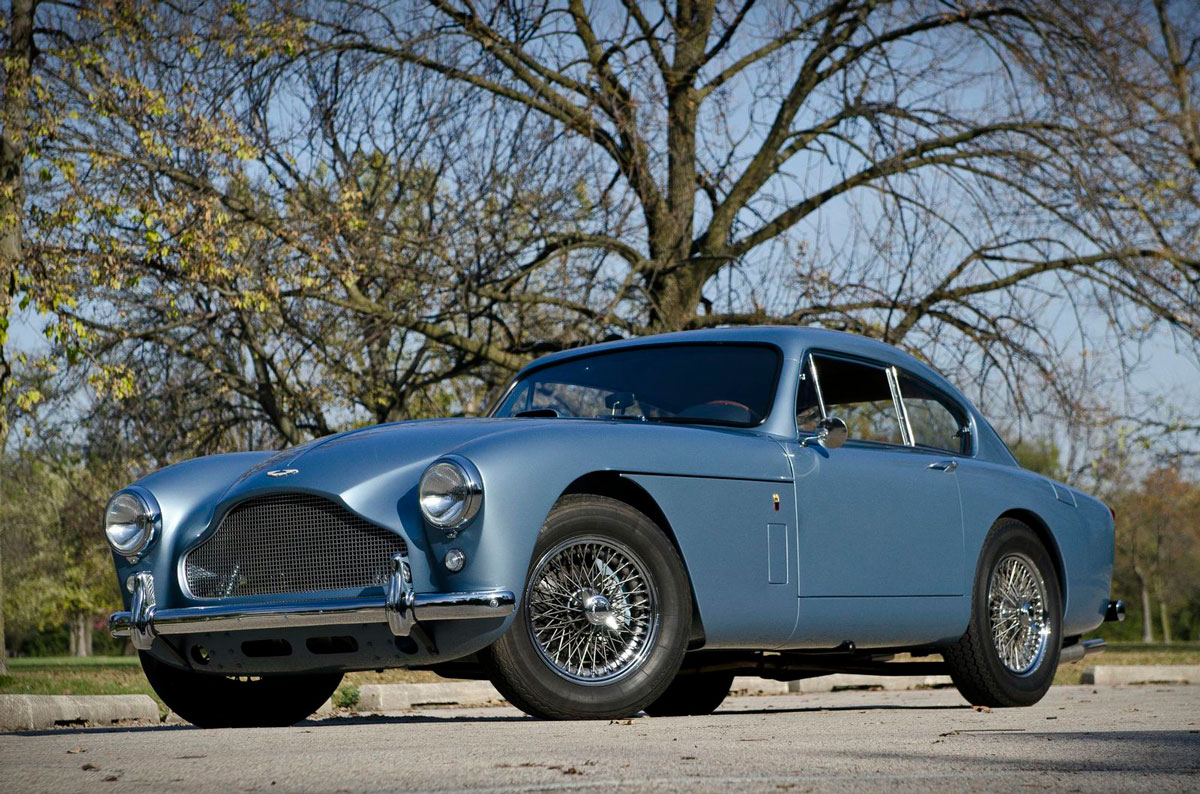
Guest Blog: Peter Conover’s Road to Restorations
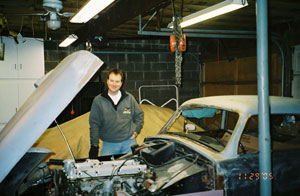 I first became interested in the restoration British cars about 20 years ago when an acquaintance agreed to sell me his long-dormant Triumph TR-6. For that learning experience I did a basic mechanical and cosmetic restoration. It wasn’t a “ground up” restoration, but I learned what was involved. For my subsequent restoration, an Austin Healey 3000, I did do a complete restoration. It was the first time that I ever purchased a car and worked on it for years before I ever had the chance to drive it. It was during the Healey restoration that I met Mark Baker at Sport & Specialty in Durand, IL. Mark and I developed a professional/friendship relationship wherein he allowed me to do as much work on the project as I was able. This not only saved me some labor costs, but more importantly, contributed to my connection with the car.
I first became interested in the restoration British cars about 20 years ago when an acquaintance agreed to sell me his long-dormant Triumph TR-6. For that learning experience I did a basic mechanical and cosmetic restoration. It wasn’t a “ground up” restoration, but I learned what was involved. For my subsequent restoration, an Austin Healey 3000, I did do a complete restoration. It was the first time that I ever purchased a car and worked on it for years before I ever had the chance to drive it. It was during the Healey restoration that I met Mark Baker at Sport & Specialty in Durand, IL. Mark and I developed a professional/friendship relationship wherein he allowed me to do as much work on the project as I was able. This not only saved me some labor costs, but more importantly, contributed to my connection with the car.
Before my Healey project was complete, I was already looking for my next project. An exhibit of James Bond cars at the National Motor Museum in Beaulieu introduced the notion of an Aston Martin. Research revealed that the prices of these cars were in a whole different league than what I had experienced so far, but confident of my ability to restore an affordable rough example, I set about trying to locate a suitable candidate. In October 2005 I tried to acquire a DB MkIII drophead that was up for auction in the U.K., but was quickly outbid past my limit. However, later that fall, 3 different coupes amazingly came available within a few weeks. The first was in California, the second in Italy, and a third one in Ohio.
As the one in Ohio was most promising, as well as most accessible from Chicago, I went to see it and bought it on the spot. The car had been originally dispatched in January 1958 to a dealership in Los Angeles and evidently spent most of its early years in California. It had been last titled in California in 1992 to an individual residing in Newport Beach. Apparently, sometime after an accident, repair/restoration work was begun, but before the job was completed, the car was sold to someone in Ohio. That buyer held onto the car for over 12 years, without doing any further work on the car, until he decided to sell it in 2005. Although I was able to contact the Ohio owner, I was unsuccessful in my attempt to reach the former owner in California.
After bringing the car to Illinois, I soon realized how much of it was missing. Although I had known that it had no interior (the seats were missing completely) and it had been hit in the rear, it was only through further research that I found out just how much was not there – nothing that couldn’t be replaced, but as there isn’t too much documentation, it would be difficult for me to know exactly how these cars were put together. The more I got into it, the more I felt I needed something to model the pieces on.
Feeling a bit of buyer’s remorse and thinking I might have been better off with one of the other cars, it was suggested to me by Kevin Kay, the Feltham Aston restoration specialist who had been advising me, that I get the California car that I had been considering earlier in addition to the one I already had. After the initial shock of this idea wore off, what he had to say made sense: “First, you could use an unmolested example to build your car by. Second, the MkIII is a rare and sought-after car, and you could sell it when you were done for good money.” As it was still available, we snatched it up. As it turned out, the two cars were very similar: In addition to both being early MkIIIs (with the small taillights), according to the factory build sheets they were both originally Black cars with Red interiors. The big difference was that one now had no interior but intact mechanicals, while the other had a complete (albeit shoddy) interior and the mechanicals apart.
Mark Baker thought it was a great idea. He felt having two cars next to each other would answer a lot of questions that would arise during restoration. The two cars were brought together at Mark’s shop in April 2006: AM300/3/1380 completely dismantled, with body work proceeding, while AM300/3/1391 stood proudly to the side. Many people asked me if I was going to make one car out of the two. Not only did I feel that would be a disservice to this rare model, but I was counting on the proceeds from the sale of the second car to offset some of my expenses on the first. As it turned out, I was made an “offer I couldn’t refuse” on the second car, and sold it before I was completely finished with it.
As the years stretched on, I was dumbfounded on how long the restoration was taking and how expensive it was turning out to be. But having thrown myself 100% into the endeavor, I was determined to see it through. Finally, in July 2011, I brought it home in time to drive it to Elkhart Lake where it made its debut at the Road and Track Concours.
Read More of My Blog Posts
Open House 2025 is a success!
Perfect weather met up with old friends and new, old cars and new, and a great day all together at the The Sport and Specialty Open House 2025. Everyone took some time with walk through the shop, meet all of the Sport and Specialty crew, and see how the current...
Accelerating into The Amelia Concours d’Elegance
While I’ve been attending the Amelia Island Concours as a spectator for some time, the last two years have been unique as I have been able to show cars with the Maine Classic Car Museum where my friend Andy Reid is the collection manager. My small role has been to...
The Car Restoration Equation: Love, Value, and Cost
We probably turn away more than 40% of the inquiries about restoration we get at Sport and Specialty. Not every car should be restored, regardless of what the owner may believe. The “back of the napkin” way to calculate this is pretty straightforward. The first...
WMS Slotcar Club Visit – Great Fun!
We had a group of Middle Schoolers come out with my friend Ana Alarcon Ben Holzem today. New trainees. A ton of fun with these guys. Super enthusiastic about everything!!! We need to hook them early. Nice kids!!! Read More of My Blog Posts
With a Little Help From My Friends
Ten years used to feel like a lifetime, these days it seems like the blink of an eye. (except for April 2020, it felt like a lifetime—but I digress.) My ten-year ownership of Sport and Specialty has been equal parts fun, aggravation, gratification, and...
Sport and Specialty featured on the SEMA Car Builders Series hosted by Sabra Johnson
Early in 2022 I received a call from the marketing chief at Moss Motors asking me if I'd like to work with SEMA (Specialty Equipment Manufacturers Association) helping them produce a video showing an example of a British restoration business to their members....
2022 Open House & Car Show – July 23rd!
Put Saturday July 23rd on your calendar for the 2022 Sport and Specialty Open House and Car Show. Bring any marque, model, or year of car, but get there. Daily drivers welcome! Bring a friend, take a drive, and see what we’re working on and finishing up. We expect...
Buy, Sell, Hold: Spotlight #7 – The state of classic, collector, and even electric conversion cars
As many of my friends will tell you (and others too), if you ask me a question I will give you the most heartfelt answer I can. Sometimes they're even amusing...... Thanks to Darin Roberge of Motorwerks Marketing and Sports Car Market Magazine for the time on...
The Proper Color for the Car
There was a story I read some years ago that Ford had a computer program that wouldn’t allow them to order and build a car with odd looking interior and exterior color combinations. In the restoration business we are those computers. When customers bring their cars to...
The Amelia, auction bought car quality, AZ vs. Amelia, and other topics on another Driven Radio appearance
I was happily re-invited to yet another podcast interview, with the guys at the Drive Radio Show. It’s hosted by Brett Hatfield, auto journalist, Auction Analyst for Sports Car Market, and editor of readthedriven.com, plus Corey Pratt of Craving Cars from YouTube, and...
The 1939 Alfa 6C at The Amelia
Some years ago my friend Andy Reid invited me to bunk in with him at The Hilton Head Concours. We had a great time and have mostly roomed together when our schedules allow. For Amelia we have been doing VRBO places with our friends Peter Singhof and Dirk De Jager,...
Catching up with the Sport and Specialty crew
For 9 years now I’ve managed the website for Sport and Specialty and one of my favorite parts of the job is that I spend time with the guys catching up on their work, their goings-on, and drooling over the cars under their care. This year was no different, but the...
